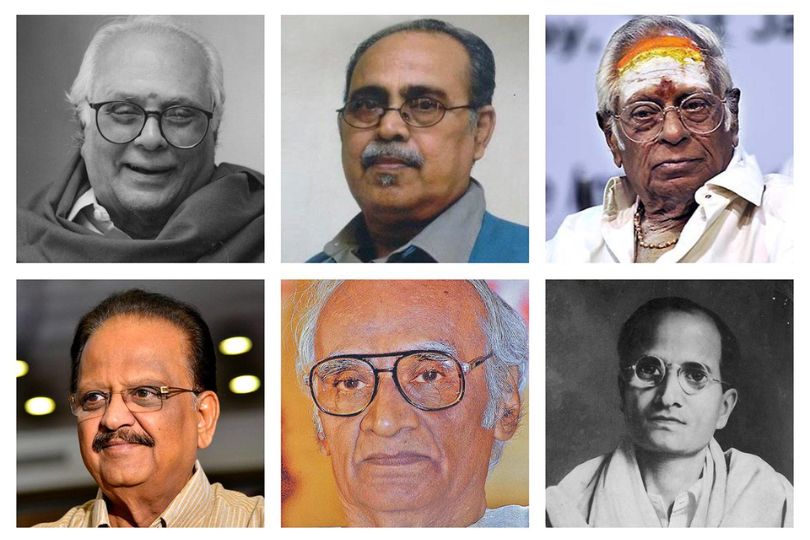There are Several Languages that have Enriched Tamil Culture, Music, and Literature
Explore the rich tapestry of Tamil culture with multilingual contributors in literature and music. Discover the cosmopolitan legacy of the Madras Presidencyon Jan 17, 2024

Some renowned writers, whose mother tongue was not Tamil, chose to write and translate in Tamil. This trend might be traced back to a few centuries earlier, when missionaries like Veeramamunivar, Robert Caldwell, and G.U. Pope, as well as civil servants like Francis Whyte Ellis, made a permanent contribution to the language.
R.K. Narayan, a writer, once stated that he was unaware that he was speaking a foreign language because English flowed naturally to him. In certain ways, his comment applies to some of the greatest Tamil writers who did not speak Tamil as their first language. They decided to write and translate in Tamil. The trend may be traced back a few centuries, when missionaries like Veeramamunivar (Constantine Joseph Beschi), Robert Caldwell, and G.U. Pope, as well as civil servants like Francis Whyte Ellis, made significant contributions. "The list of such writers who have contributed to modern Tamil literature is limitless. Ku.Pa. Rajagopalan, Na. Pitchamoorthy, Ki. Rajanarayanan, Gnanakoothan, M.V. Venkatram, Thirulogaseetharam, Dileepkumar, Sukumaran, Athmanam, Jayamohan, Vimalathithamamallan, Nanjundan, Kriya S. Ramakrishnan, and Po. Velsamy are some of the writers whose mother tongue is not Tamil," writes Aravindan in Kalachuvadu, a literary magazine that has profiled a few such writers.
Not confined to literature
The contributions of non-Tamil speakers are not limited to literature. Manayangath Subramanian Viswanathan, aka M.S. Viswanathan, affectionately known as MSV, was a Kerala native who dominated the Tamil film industry as a music director for nearly 50 years. With a few exceptions, the majority of playback singers are not Tamil. T.M. Soundararajan, who voiced two of yesteryear's top heroes, M.G. Ramachandran (MGR) and Sivaji Ganesan, was a member of the Saurashtra community in Madurai. Leading playback singers P. B. Srinivas and 'Paadum Nila' S.P. Balasubramaniam (SPB) hailed from neighbouring Andhra Pradesh. MSV gave SPB the opportunity to sing in Tamil films once he perfected his Tamil accent.
Similarly, Telugu is the mother tongue of P. Susheela and S. Janaki, two female playback singers who have captivated generations of admirers since the 1950s. The singers K.J. Yesudas, P. Jayachandran, and K.S. Chitra are from Kerala.
The Cosmopolitan Presidency
The Madras Presidency, which included parts of Kerala, Andhra Pradesh, and Karnataka, was cosmopolitan prior to the formation of Tamil Nadu (formerly named Madras) following the linguistic restructuring of States in 1952.However, drawing boundaries for states did not result in fissiparous tendencies. Many people had migrated to Tamil territory under the reigns of the Mughals, Nayaks, and Marathas, and it had become a melting pot of cultures, politics, music, food, and fabric.
The migrants claimed Tamil territory as their own and blurred the barrier that separated them from Tamil land via their contributions. It is more prominent in language and literature.
“I disagree with the concept of mother tongue. I would rather call it a language of circumstances and compulsion. Though Urdu is my mother tongue, I am comfortable in Tamil and my language is strong and has depth because it was enriched by the reading of great literary works in Tamil,”says writer Kadarkarai, who has authored and edited books on Mahakavi Bharathiyar and Mahatma Gandhi. Kadarkarai believes that native speakers are more likely to remain bystanders, but non-native speakers are compelled to explore. “Creativity has no language, and literature is above sectarian and puritanical ideas,”He says. It defies explanation why M.V. Venkatram, a Saurashtrian who had a wealthy and happy life as a zari merchant, opted to become a full-time Tamil writer and was subsequently compelled to live in poverty. He received the Sahitya Akademi Award for his novel Kathukal.
The second language
"The Saurashtrians adopted Tamil as their second language. Tamil dominated their discourse, thought, and writing. They have a deep regard for Tamil, bordering on dread, and it has forced them to master the language extensively," writes Suba Balakrishnan in the biography of M.V. Venkatram, a friend of T. Janakiraman and Karichan Kunju. Ki. Rajanarayanan never felt compelled to use Tamil grammar, as non-Tamil speakers typically do.
He couldn't read or write Telugu, despite the fact that it was his native tongue. He wrote in Tamil, which came readily to him, and he succeeded in vividly depicting the life of Karisal region," writes S.A. Venkata Subburaya Nayakar.
Tulu was the mother tongue of T.A. Srinivasan, a translator and writer. Tulu is one of the Dravidian languages with no script. Even though Tulu is physically close to Kannada, Kannadigas do not grasp it. Many Tulu speakers have settled in Kerala and the Kanniyakumari area of Tamil Nadu. Masal dosa is their gift to Tamil Nadu, whereas the Marathas introduced Sambar.
Gnanakoothan, a Kannadiga poet, notably stated in one of his poems that "though Tamil is my breath, I will not breathe it down on others". Addressing a literary meeting at the Kannada Sangh in T. Nagar, he made it clear to the organisers that he was representing the Tamil language. "I may be Kannadiga, but I was raised in Tamil Nadu. The Tamil language made me famous. According to poet Ravisubramanian, Gnanakoothan once said, "I will only read poetry in Tamil." Gujarati is the mother tongue of Tamil writer Dileepkumar. "I am not entitled to any other identity than a Tamil writer, who developed love for modern Tamil literature and contributed to its development and spread," he wrote in Kalachuvadu.



.jpg)






.jpg)

.jpg)
.jpg)
.jpg)

.jpg)
.jpg)

.jpg)








Sorry! No comment found for this post.